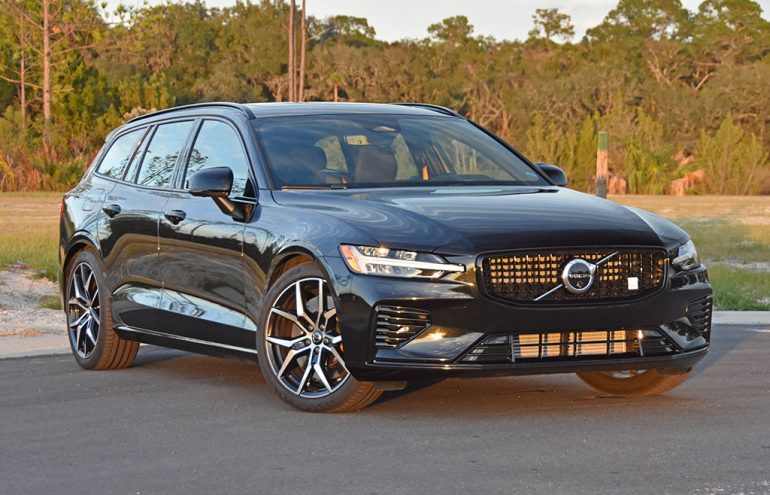
In America, wagons appeal to a small, select group of people and have a hard time being a commonplace vehicle, but there’s something special about their exclusiveness. Within such a group, The Volvo V60 Recharge plug-in hybrid electric vehicle (PHEV) remains to be a rarity that shouldn’t be overlooked as it’s proven to be quite a decent performer with respected luxury accommodations wrapped up in an attractive, versatile wagon package.
The V60 Recharge Polestar Engineered, exclusively a PHEV, is more of a performance wagon for the road, while the V60 Cross Country is more adventurous in having a lifted suspension, giving it some light-duty off-roading prowess. By offering the two versions of the V60, Volvo commits to giving wagon enthusiasts options, as the brand has done in the past for many decades. In my recent week with the V60 Recharge Polestar Engineered, I am enamored with all that it has to offer for such a rare vehicle type, putting the Volvo brand’s luxury, performance, and plug-in hybrid capabilities at the forefront along with its attractive low-slung looks.
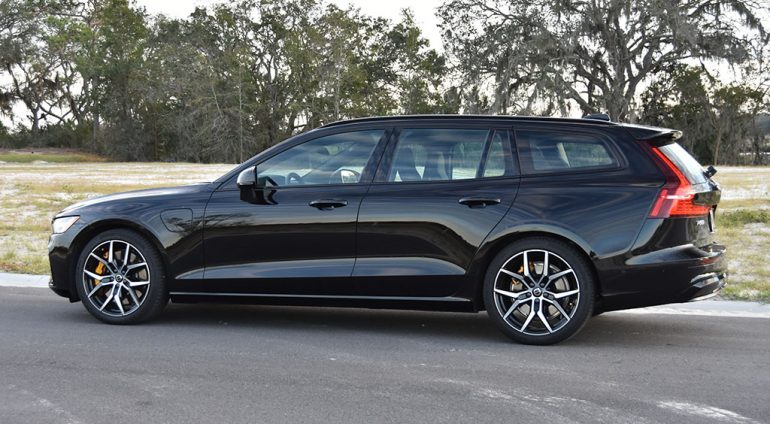
Hybrid and plug-in hybrid vehicles are a respected gateway to electrification in today’s automobiles. On the PHEV front, Volvo seems to do well in offering such for the V60 wagon as it proves to not only add efficiency to the equation but also add performance where the V60 Recharge Polestar Engineered proudly wears the mouthful named badge. Here, the V60 PHEV utilizes a 2.0-liter turbocharged 4-cylinder engine that powers the front wheels and an electric motor in the back to power the rear wheels. The turbocharged engine alone makes 312 horsepower and 295 lb-ft of torque, and the rear electric motor supports the powertrain with 143 horsepower and 228 lb-ft of torque. With the engine and its 8-speed automatic transmission working with the rear electric motor, you get a total system output of 455 horsepower and 523 lb-ft of torque, which makes for a rather quick wagon.
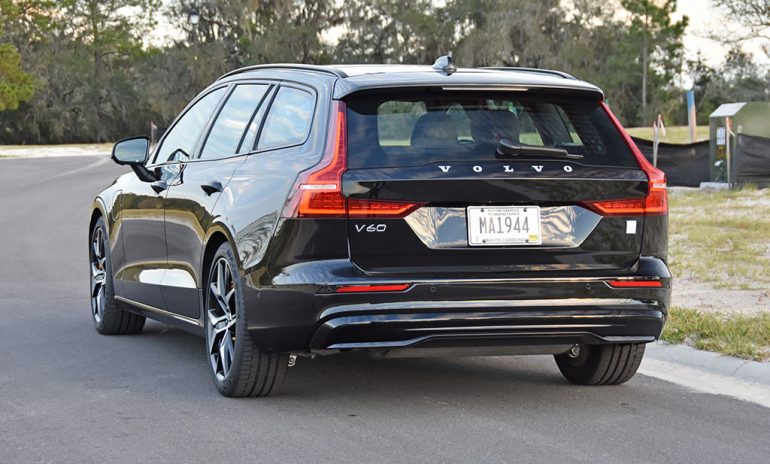
That quickness equates to a 0 to 60 mph time of about 4.1 seconds, and the V60 PHEV does it without any drama and remains mostly consistent no matter the charge state of the battery. The way in which the V60 PHEV lays down power is smooth and mostly seamless with power transitions. Volvo has mastered its hybrid systems, so there’s no apparent delay of transitions, and the power comes on strong when you need it.
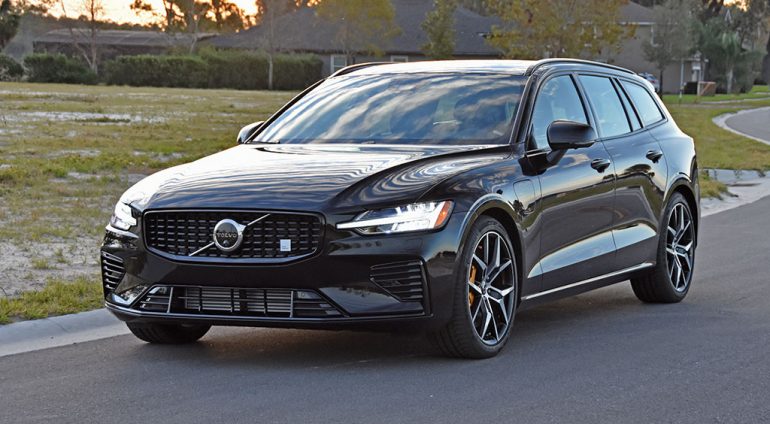
Driving the V60 PHEV is a joy as you get a respected low-slung feeling and remarkable stability from the suspension setup. I would also go as far as to say the V60 PHEV rides excellent, and its body motions are hardly ever upset with unwanted motions going over road imperfections remaining mostly level on back twisty roads at speed. The stylish 19-inch forged wheels and summer tires do well to aid in keeping the V60 planted and smooth.
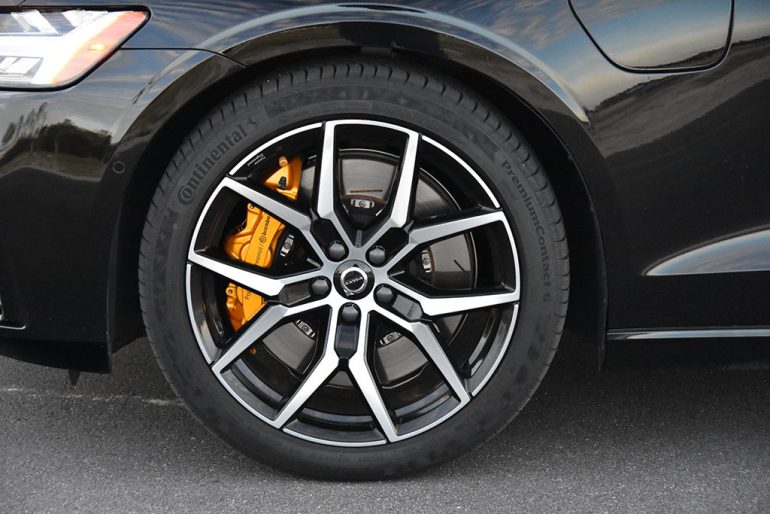
Strangely enough, Volvo seems to rest on a fine line of the V60 Recharge Polestar Engineered PHEV from being a full-on midsized performance wagon or a grand tourer. The line gets blurred because you have a decent amount of power along with 6-piston Brembo calipers clamping down on large 14.6-inch semi-slotted rotors up front. Still, the V60 PHEV isn’t necessarily a thrill machine, but it holds its own for being a surprise from a stop light and handles exceptionally for a wagon.
Utilizing the electric power aspects of the V60 PHEV is a welcoming thing as well, where you can get up to 44 miles of electric-only range. That range is legit as I was able to just match it after a full charge from my 240-volt, 40-amp Level 2 home charger that took just under 5 hours for a full charge from a fully depleted battery. You get remarkable fuel consumption figures when you benefit from a fully charged battery. With a full-charged battery using the 44 miles of electric range and then traveling an additional 150 miles or more, you’ll walk away with 74 MPGe or better. Granted, using the battery electric-only power you get less overall power, it’s just enough to keep with highway traffic and calmly overtake vehicles. Press far into the throttle to demand additional power and the gas engine fires up quickly.
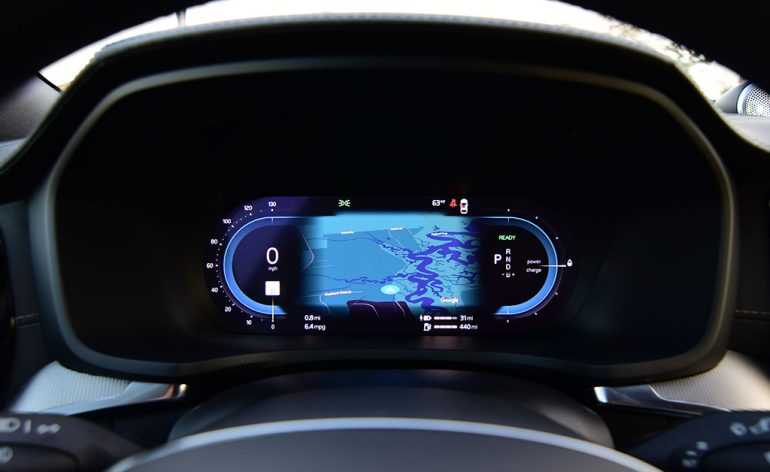
Taking off on a trip with a depleted battery utilizing the hybrid system to manage power, you’ll basically match the 31 mpg EPA estimate overall with a mix of highway and city driving. Though, around town, you may be able to muster well over the 31-mpg figure, which I did to get nearly 38 mpg in a bout of heavy traffic for about 8 miles. The plug-in hybrid system management is wonderful, and consciously utilizing the fixed power gauge in the digital gauge cluster helps you manage power to limit the use of the gas engine at times.
Braking regen is smooth with the transitions from regen drag for momentarily adding a charge to the battery, to the use of the friction brakes. There technically isn’t a one-pedal drive mode, but using the B drive mode using the shifter enacts heavy braking regen enacting the brake lights but doesn’t bring you to a complete stop without using the brake pedal.
For the past few years, Volvo has had the tendency to make their interiors more minimalistic and doing such works for some people. Inside of the V60 PHEV, you find a luxurious cabin with an abundance of soft-touch surfaces and rather supportive seats up front with plentiful power adjustments. While the front seats have fixed headrests, somewhat of a Volvo tradition as of late, they have a good amount of adjustability and are quite supportive, where they hug your body firmly for most adults.
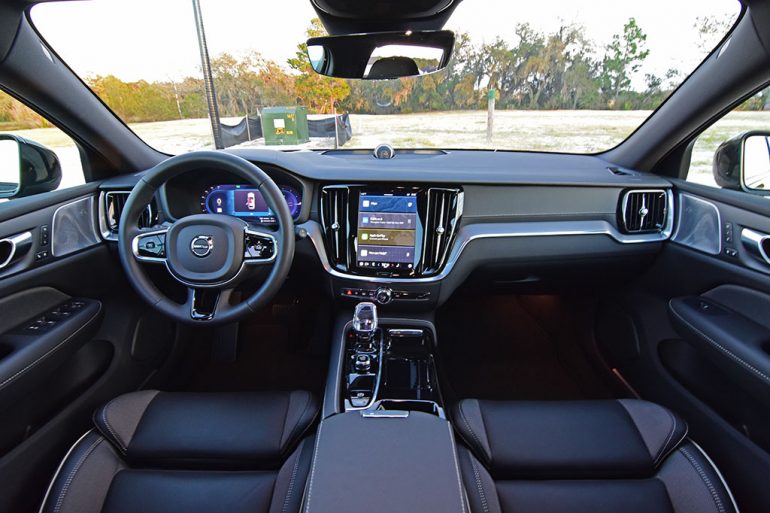
The controls of the vehicle are reduced on the center console for use through the portrait-oriented 9-inch touchscreen. The infotainment touchscreen initially has a lengthy learning curve if you’re not accustomed to Volvos, but once you overcome the newness of the system, most common functions become second nature. The large central volume knob and just a small set of physical buttons for the front/rear defrosters and audio track/station change prove to be useful if you become familiar with the smallish touchscreen button areas for the dual-zone automatic climate controls.
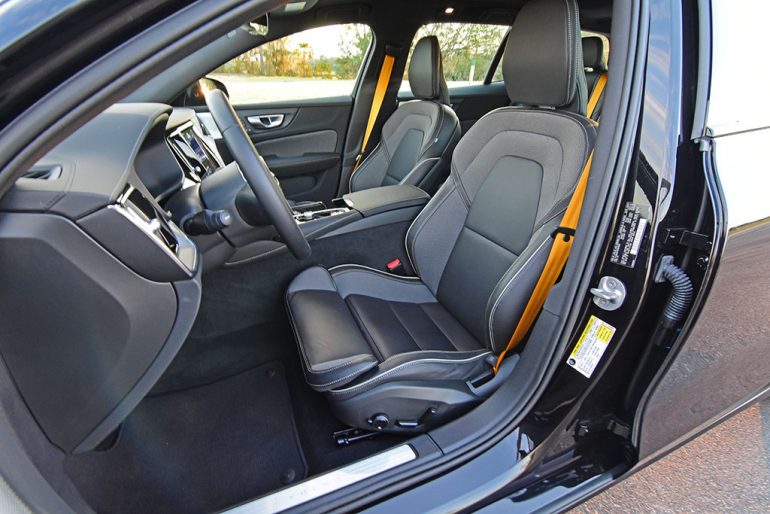
The integration of Apple CarPlay displays an elongated version of the display as the screen is portrait-oriented, which looks good to leave essential functions like the climate controls fixed in the lower portion of the screen. The embedded Google interface with Google Maps, Google Play Store, and Google Assistant is also useful when you don’t integrate your smartphone.
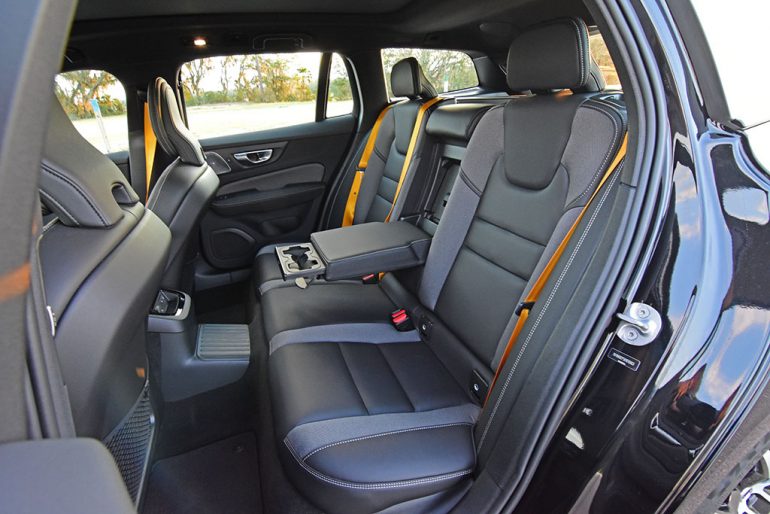
The rear seating area is surprisingly accommodating, with outboard heated seats and just enough room for two adults and a smaller person in the middle to find comfort. The magic of being a wagon affords additional cargo space with just over 25 cubic feet of storage with the rear seatbacks in place. Fold down the 60/40-split seatbacks, and you get just over 60 cubic feet of space.
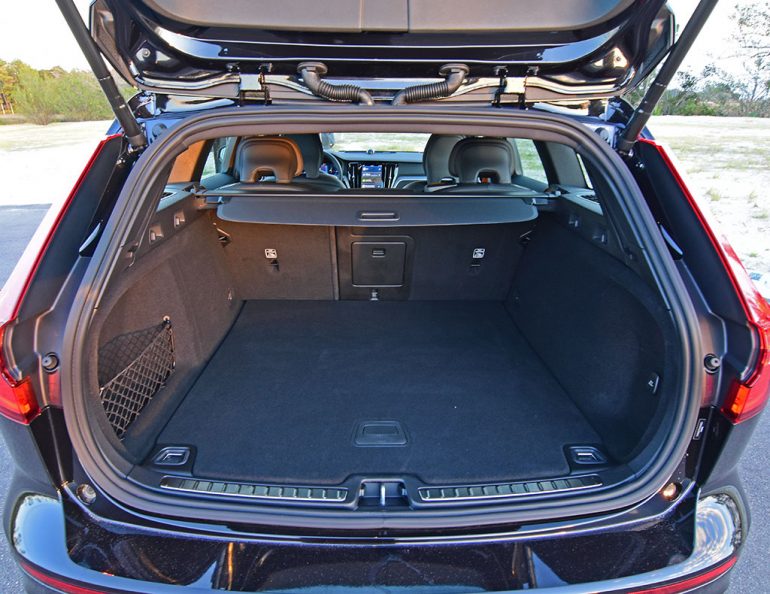
Volvo is always at the forefront of safety, and the V60 bundles up all the expected active safety features with the addition of having some systems monitoring in the background that cannot be disabled, such as the run-off road mitigation coupled with the lane departure mitigation. Other Volvo exclusive highlights include the oncoming lane mitigation and a city safety collision avoidance system. The only thing that I would like to see changed or improved upon is the 360-degree camera system, where it may one day be able to display both the rearward image and the surround view imagery at the same time instead of just a top-down view only, or just the rearward/forward view.
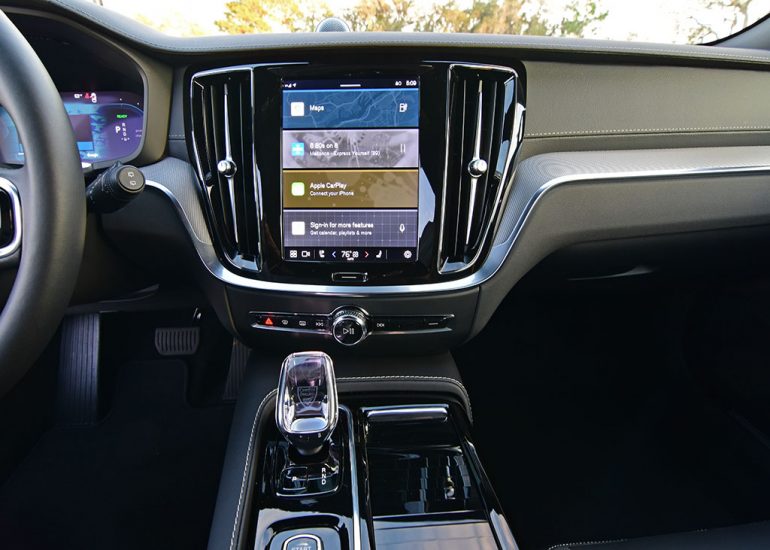
With the Volvo V60 Recharge Polestar Engineered PHEV only coming in one setup without any trim levels, the pricing scale starts at a higher point, at $71,250. The good thing about that is the pricing doesn’t go far from such, but it comes at a ‘cost’ of not having many customization options apart from just four exterior color options. Otherwise, you’re left with just one interior setup being charcoal Nappa leather, leatherette, and textile. The only options are limited to a handful of accessories and my test vehicle’s optional power-operated tailgate, for which the total price comes to $72,925 when you include the destination charge of $1,095.

Malcolm Hogan is the founder and editor of Automotive Addicts, a trusted voice in the automotive media world for over two decades. With 20+ years of hands-on experience covering the industry, Malcolm has built a reputation for delivering honest reviews, sharp insights, and in-depth coverage of everything from new car debuts to high-performance test drives. Passionate about the evolving car culture and staying ahead of the curve, Malcolm continues to lead Automotive Addicts as a go-to destination for enthusiasts and industry insiders alike.